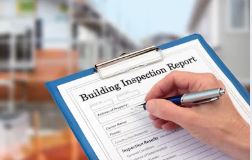If you are planning to buy a property, you should get ready and accept the fact that upon searching for prospects and visiting each of them is not all about excitement and delightful experience. In the buying process, there are also uninteresting aspects, but still, you need to do them. The best example of this is building inspections in Melbourne.
Your capability to claim damages if your property reveal’s some horrible surprises will be severely limit if you acquire your dream property without a pre-purchase inspection. Also, Premium Pre Purchase Inspections can give the assurance that you are aware and precisely know what you are buying and gives you the necessary information you need for you to make the top selection.
 When we say inspection, it refers to an in-depth visual inspection of a property which is performed by a certified and competent building inspector. The inspection report should be carried out and govern the sale of properties following the rules and laws in Australia. Such report will set out the minimum level of inspection, competency, and reporting levels which is necessary to ensure your claims if you need to seek damages.
When we say inspection, it refers to an in-depth visual inspection of a property which is performed by a certified and competent building inspector. The inspection report should be carried out and govern the sale of properties following the rules and laws in Australia. Such report will set out the minimum level of inspection, competency, and reporting levels which is necessary to ensure your claims if you need to seek damages.
The inspection report should consist of the following:
1 – Site Features
It must include retaining walls, site drainage, service supply, gates, fences, driveways, and corridors.
2 – Foundation
It must involve construction, access, material, connections, insulation, ground clearance, subfloor services and ventilation.
3 – Roof and Exterior Components
Upon inspection, the roof and exterior elements must include things like cladding materials, attachments to the roof, roofing material, rainwater systems, penetrations, and attachments.
4 – Interior Components
It must consist of design and location, material, internal joinery, electrical fittings, non-invasive moisture testing.
During an inspection, every detail of significant defects or irregularities that the inspector notice should be in the report. Defects such as noticeable timber decay, undersized framing members, rising damp, signs of gap settlement, unsafe electrical wiring, signs of humidity ingress or unlawful building work.
Keep in mind that you must avoid verbal inspections since they are very risky. Generally, they are not covered by insurance companies because there is no written evidence of the inspection findings.
When choosing a qualified building inspector, make sure that you ask necessary and suitable questions to carry out your inspection. Ensure that you know very well as to who is carrying out the inspection and what qualities and relevant industry experience that particular inspector has.
It is great to choose an inspector whom you think is unbiased, somebody without emotional attachment to your situation. Avoid inspector who has a financial concern in defects or renovations, giving quotations or proposing to repair damages for there will be a conflict of interest.
The main point is that building inspections Melbourne are the only possible option that is essential and indispensable in terms of securing your investment.